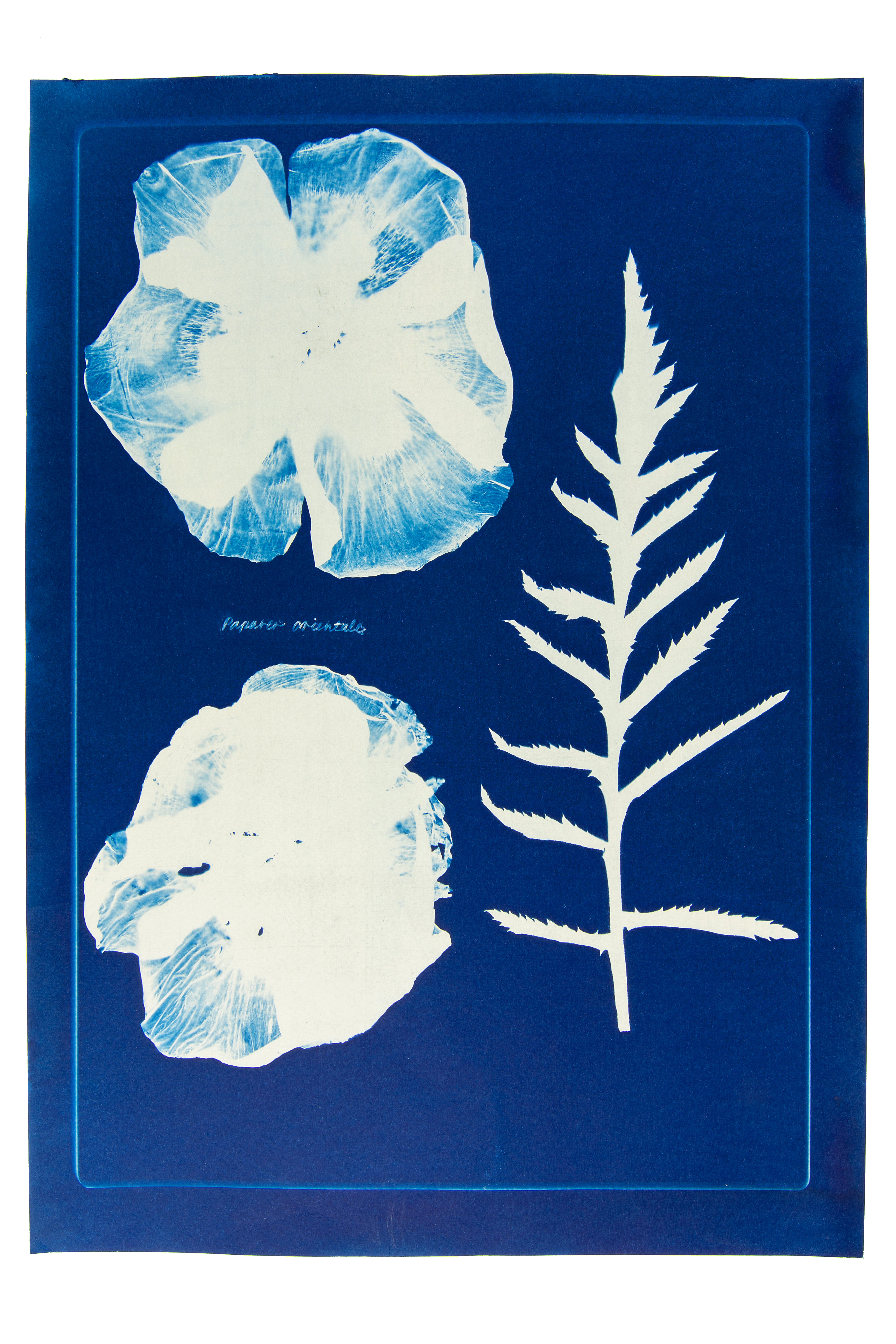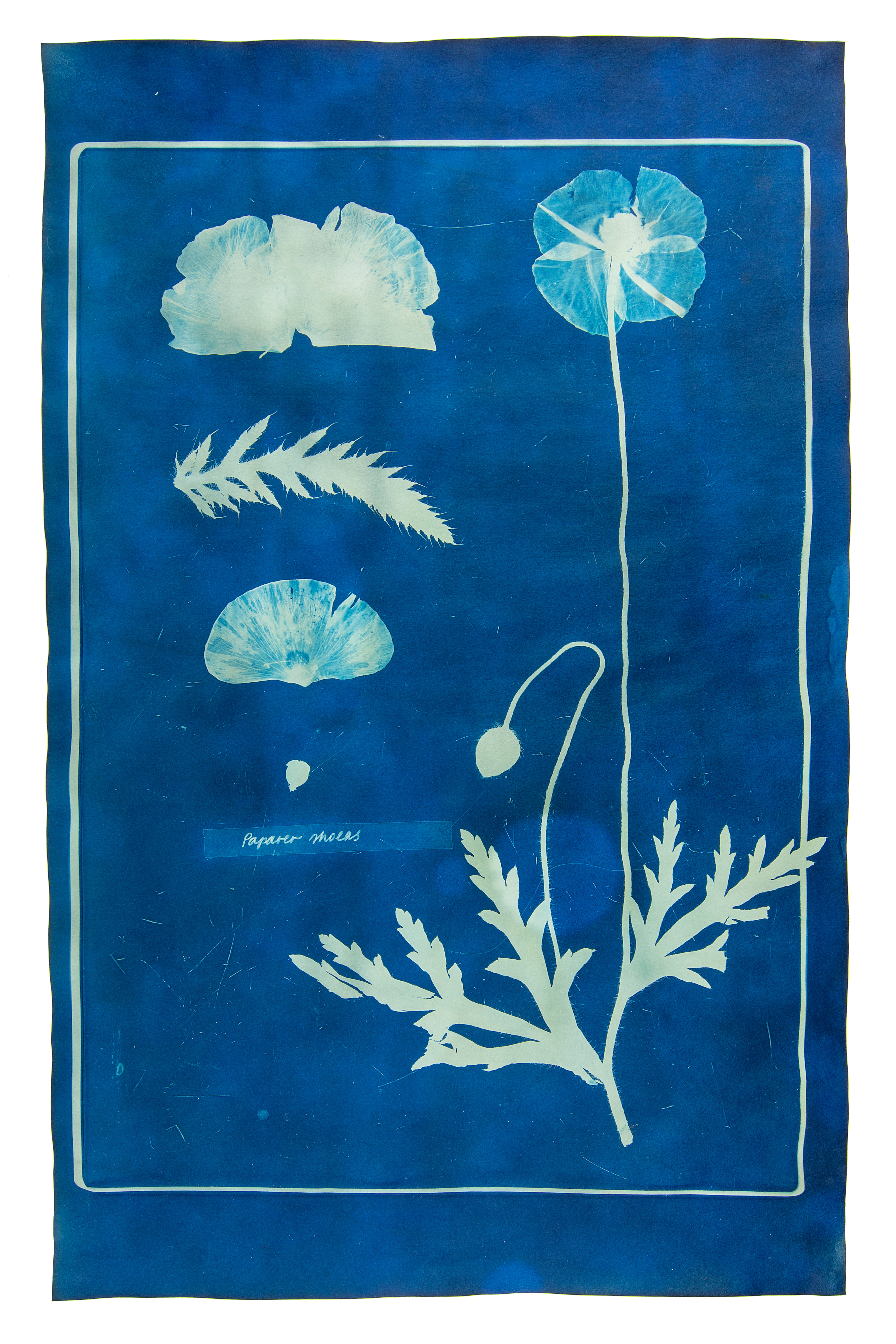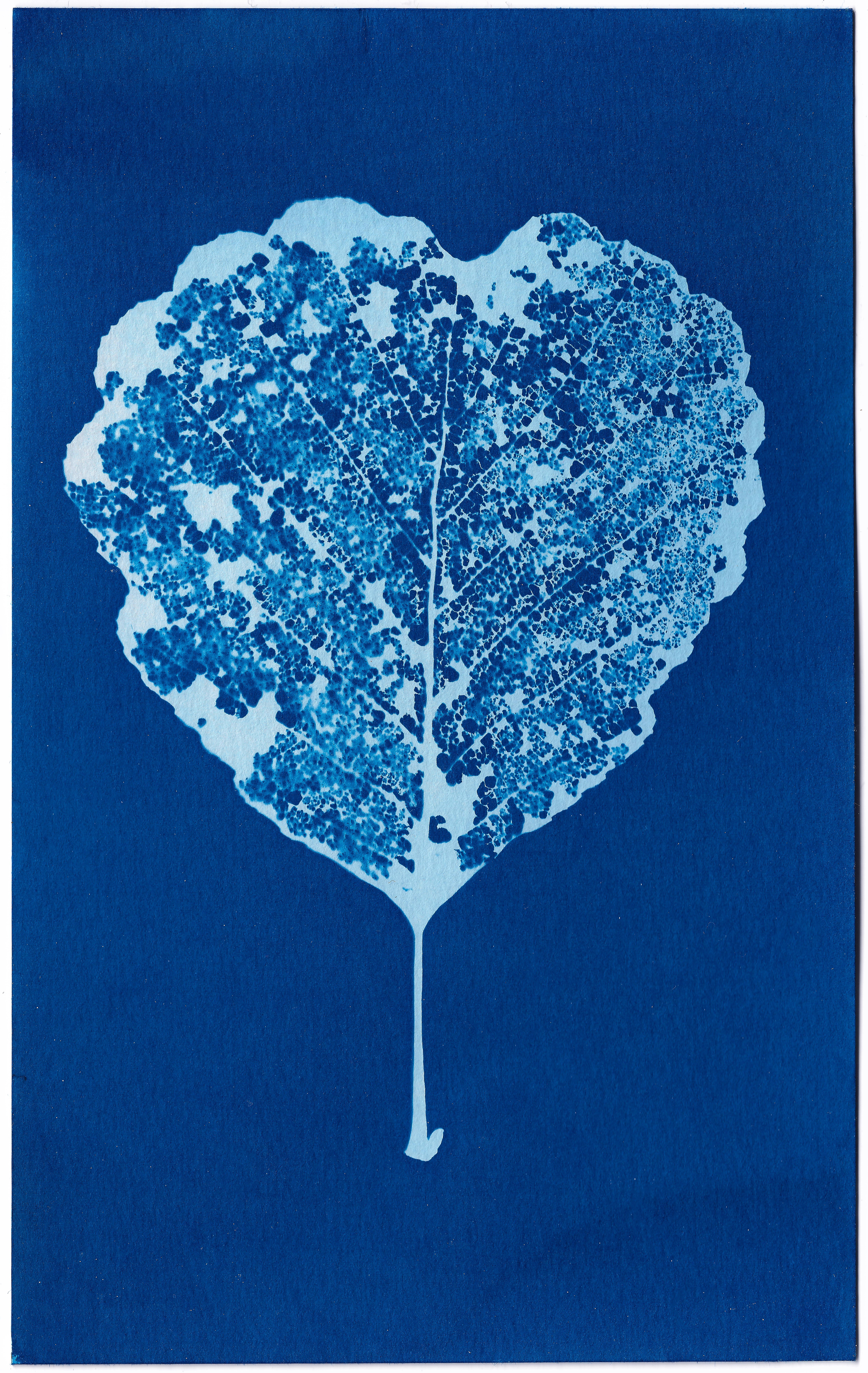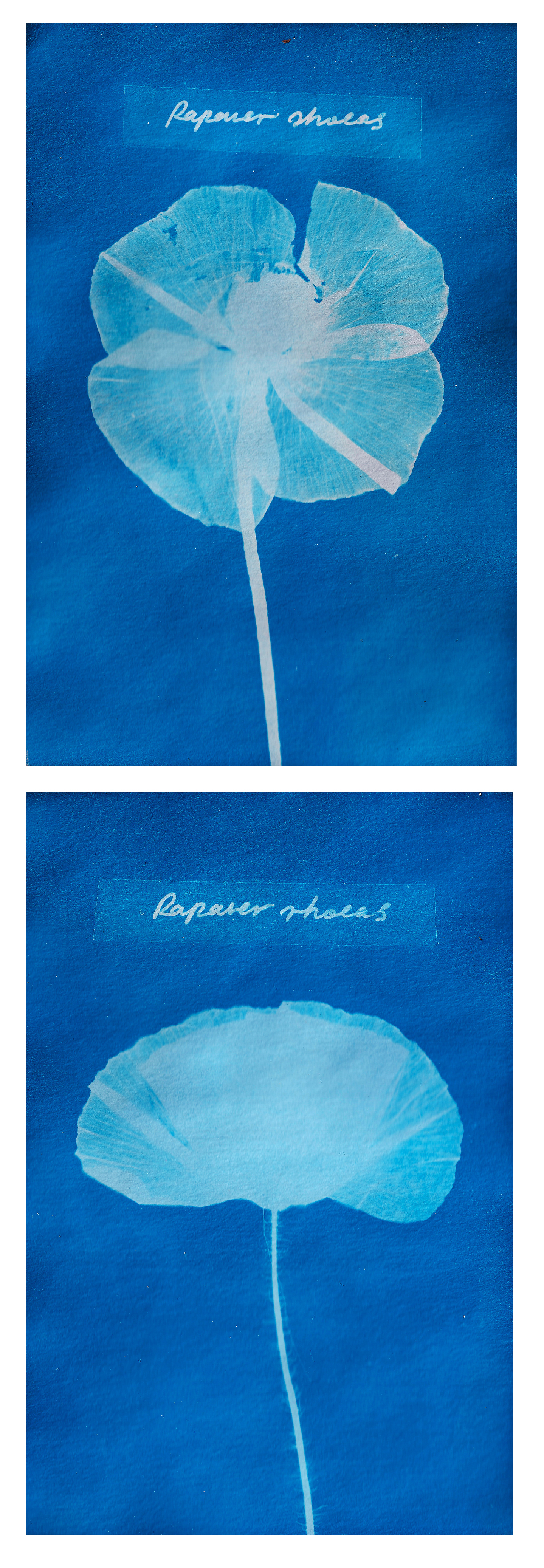COLLECTING /PRESSING / PRINTING CYANOTYPES
Pressed plants, which don’t find their way into the herbarium usually become stencils for prints. A good time for home-made cyanotypes is between May and August, when there’s sufficient sunlight hours and the light is strong.
This simple printing technique marks an important moment for women in science – Anna Atkins, who was the first person to really test and try the process in her 1943 Photographs of British Algae: Cyanotype Impressions is considered the author of the first book illustrated with photographic images.
The materials required are simple – paper, an object (the flatter, the more translucent and detailed the better), a piece of glass to keep the composition in place, water, and two chemicals in equal amounts: ammonium citrate and potassium ferricyanide, very easy to obtain as a ready set for printing.
![]()
![]()
Printing with sunlight is rewarding and gives the photograms a certain quality but it’s not a process to be controlled. The results will vary with light intensity, so depending on the time of the year, time of the day and the clarity of the sky at a given moment. On every day of printing I use test strips - each for the type of paper I’ll be using - to have an idea of exposure times.
Different types of paper will also react differently, both in terms of colour and detail. But all paper is useable – below you can see tests on watercolour paper, blotting paper, regular inkjet and tracing paper. My recommendation is to use something more rigid, over 200gsm, as they dry better and are much easier to handle when wet.
![]()
![]()
![]()
![]()
![]()
![]()
![]()
This simple printing technique marks an important moment for women in science – Anna Atkins, who was the first person to really test and try the process in her 1943 Photographs of British Algae: Cyanotype Impressions is considered the author of the first book illustrated with photographic images.
The materials required are simple – paper, an object (the flatter, the more translucent and detailed the better), a piece of glass to keep the composition in place, water, and two chemicals in equal amounts: ammonium citrate and potassium ferricyanide, very easy to obtain as a ready set for printing.

Printing with sunlight is rewarding and gives the photograms a certain quality but it’s not a process to be controlled. The results will vary with light intensity, so depending on the time of the year, time of the day and the clarity of the sky at a given moment. On every day of printing I use test strips - each for the type of paper I’ll be using - to have an idea of exposure times.
Different types of paper will also react differently, both in terms of colour and detail. But all paper is useable – below you can see tests on watercolour paper, blotting paper, regular inkjet and tracing paper. My recommendation is to use something more rigid, over 200gsm, as they dry better and are much easier to handle when wet.













